Press Releases 2011
Russian Ship Finds Tsunami Debris where Scientists Predicted

October 13, 2011
Ever since the Japan tsunami on March 11 washed millions of tons of debris into the Pacific, IPRC’s Nikolai Maximenko and Jan Hafner have been trying to track the trajectory of this debris that can threaten small ships and coastlines. Until now they had only their state-of-the-art – but still untested – computer model of currents to speculate where the debris might end up. Warned by maps of the scientists’ model, the Russian sail training ship, the STS Pallada, found an array of unmistakable tsunami debris on its homeward voyage from Honolulu to Vladivostok. More photos courtesy STS Pallada/Natalia Borodina.
APEC Climate Symposium Hosted by
UHM International Pacific Research Center
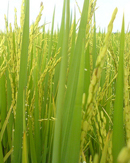
October 12, 2011
As part of the 2011 APEC activities in Honolulu, the APEC Climate Center is holding its Annual Symposium at the Keoni Auditorium, East-West Center, from October 17 through 20. Local host for the symposium is the International Pacific Research Center (IPRC), the climate center at the School of Ocean and Earth Science and Technology, University of Hawaii at Manoa.The media and the public are welcome to attend the first 3 days. The program is available at https://iprc.soest.hawaii.edu/meetings/workshops.php. If any media wish to set up interviews with presenters at the symposium, contact:
IPRC Outreach Specialist Gisela Speidel (808) 956-9252; gspeidel@hawaii.edu) or
Assistant Researcher June-Yi Lee (808) 956-7544; jylee@soest.hawaii.edu.
Author of the World Development Report 2010 to Give
 The 2011 IPRC Public Lecture in Climate Science
The 2011 IPRC Public Lecture in Climate Science
October 10, 2011
Climate Change and Development: Avoiding the Unmanageable and Managing the Unavoidable is
the title of this year’s IPRC Public Lecture in Climate Science. The free public lecture will be given by
Rosina Bierbaum, Dean of University of Michigan’s School of Natural Resources and Environment, at 7:00
pm, October 17, at the Art Auditorium, University of Hawaii at Manoa.
University of Hawaii Chosen for New Climate Science Center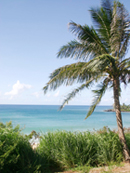
October 7, 2011
Secretary of the Interior Ken Salazar announced today the establishment
of the Pacific Islands Climate Science Center, a consortium led by the
University of Hawaii at Manoa, the University of Hawaii at Hilo, and
the University of Guam. The Pacific Islands Climate Science Center will be
part of a network of eight regional centers being established by the
Department of the Interior. The centers will serve to provide land
managers in federal, state and local agencies access to the best
science available regarding climate change and other landscape-scale
stressors impacting the nation’s natural and cultural resources.
El Niño and the Tropical Eastern Pacific Annual Cycle
Run to the Same Beat
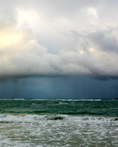
September 21, 2011
The interaction between El Niño events and the seasonal cycle of sea surface temperatures in the eastern equatorial Pacific can be described through a nonlinear phase synchronization mechanism, according to a study published in the September 16 issue of Physical Review Letters by climate scientists at the University of Hawaii at Manoa. The findings are expected to improve prediction of El Nino events.
Russian Tall Ship to Search for Missing Tsunami Debris
September 13, 2011 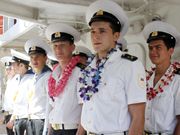
Virtually nothing is known of the whereabouts of the tons of debris that were washed into the ocean by Japan’s March 11 tsunami. Nikolai Maximenko, who made model projections of the tsunami debris path, has now engaged the Russian 3-master STS Pallada, its Captain
Vasily Sviridenko and young cadets to look out for the debris and report what they see on their homeward journey from Honolulu to Vladivostok.
East Africa’s Climate
Under the Spell of El Niño since the Last Ice Age
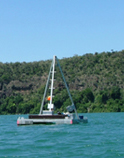
August 4, 2011
The current severe drought in East Africa is being attributed to La Niña conditions that prevailed in the Pacific until May 2011. The waxing and waning of rainfall in eastern tropical Africa in unison with El Niño–Southern Oscillation is not unusual and existed already 20,000 years ago, though the region’s last 3,000 years have seen a less stable climate, according to a study published by an international group of scientists on August 5 in Science.
Tree Rings Tell a 1100-Year History of El Niño
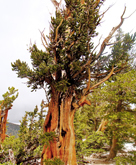
May 6, 2011
Tree-ring records from North America give a continuous history of variations in El Niño intensity over the past 1,100 years and can be used to help climate models predict more reliably how El Niño will change in the face of global warming, according to the study published in the May 6th issue of Nature Climate Change by an international team of scientists led by Jinbao Li, International Pacific Research Center, University of Hawaii.
Where Will the Debris from Japan's Tsunami Drift in the Ocean?
April 6, 2011
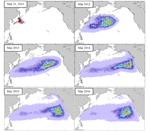 The huge tsunami triggered by the 9.0 Tohoku Earthquake destroyed coastal towns near Sendaiin Japan, washing such things as houses and cars into the ocean. Based on a model derived from past trajectories of drifting buoys, projections of where this debris might head over the next 5 to 6 years have been made by Nikolai Maximenko and Jan Hafner at the International Pacific Research Center, University of Hawaii at Manoa. Click on figure to see animation.
The huge tsunami triggered by the 9.0 Tohoku Earthquake destroyed coastal towns near Sendaiin Japan, washing such things as houses and cars into the ocean. Based on a model derived from past trajectories of drifting buoys, projections of where this debris might head over the next 5 to 6 years have been made by Nikolai Maximenko and Jan Hafner at the International Pacific Research Center, University of Hawaii at Manoa. Click on figure to see animation.
Tropical Atlantic Sees Weaker Trade Winds and More Rainfall
February 6, 2011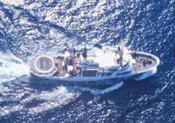 Earth is warming but not evenly. Efforts to pin down regional climate impacts of this warming have been hampered by biased wind observations over oceans. Developing a new technique to remove the bias, scientists at the International Pacific Research Center, University of Hawaii at Manoa, found that during the last 60 years trade winds over the tropical Atlantic have weakened, ocean temperature patterns have shifted, and Amazon and Guinea Coast rainfall has increased. The study by Hiroki Tokinaga and Shang-Ping Xie appears in the online February 6 issue of Nature Geoscience.
Earth is warming but not evenly. Efforts to pin down regional climate impacts of this warming have been hampered by biased wind observations over oceans. Developing a new technique to remove the bias, scientists at the International Pacific Research Center, University of Hawaii at Manoa, found that during the last 60 years trade winds over the tropical Atlantic have weakened, ocean temperature patterns have shifted, and Amazon and Guinea Coast rainfall has increased. The study by Hiroki Tokinaga and Shang-Ping Xie appears in the online February 6 issue of Nature Geoscience.
News Archive: 2013, 2012, 2011, 2010, 2009, 2008, 2007, 2006, 2004, 2003, 2002, 2001, 2000

